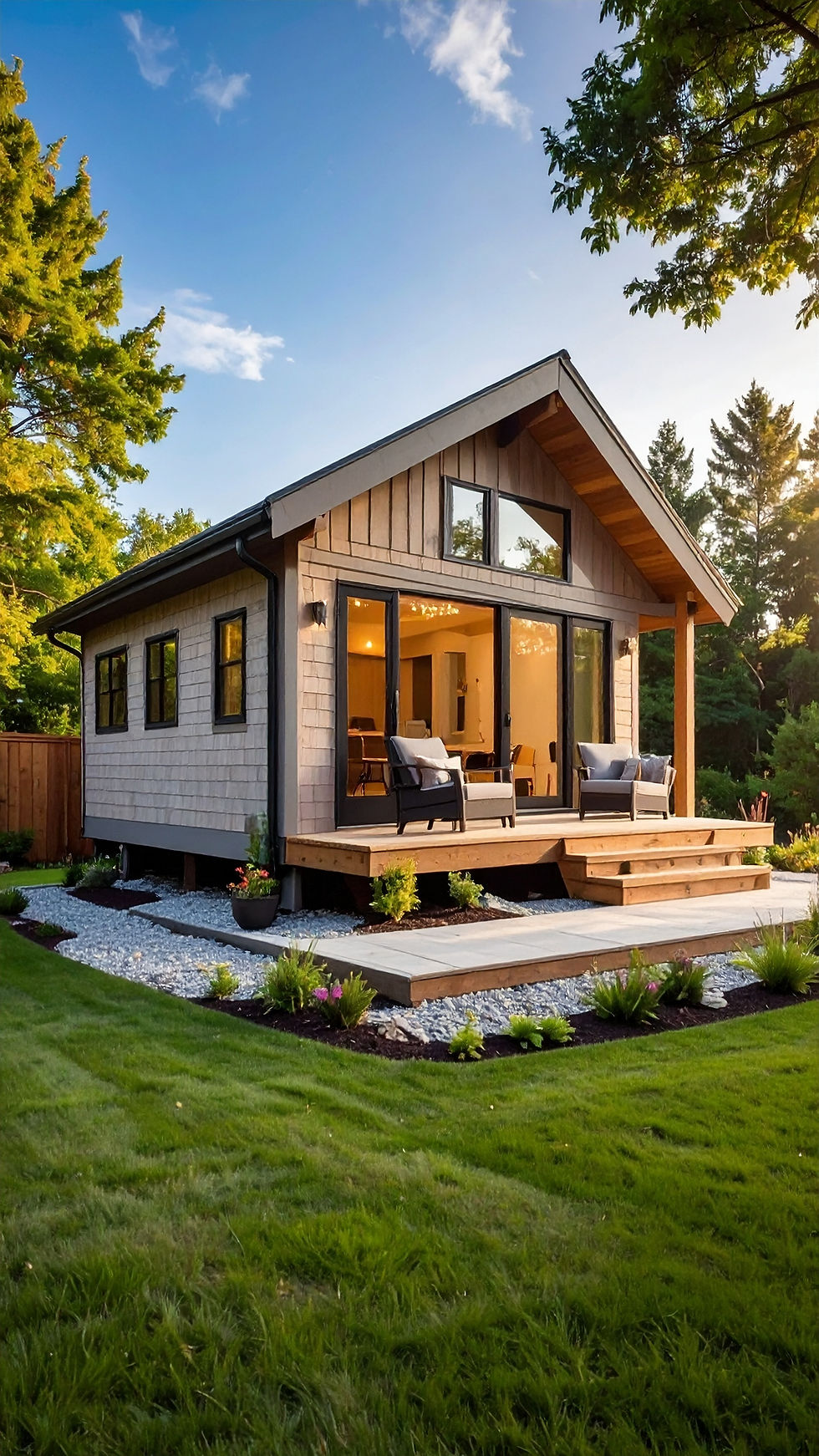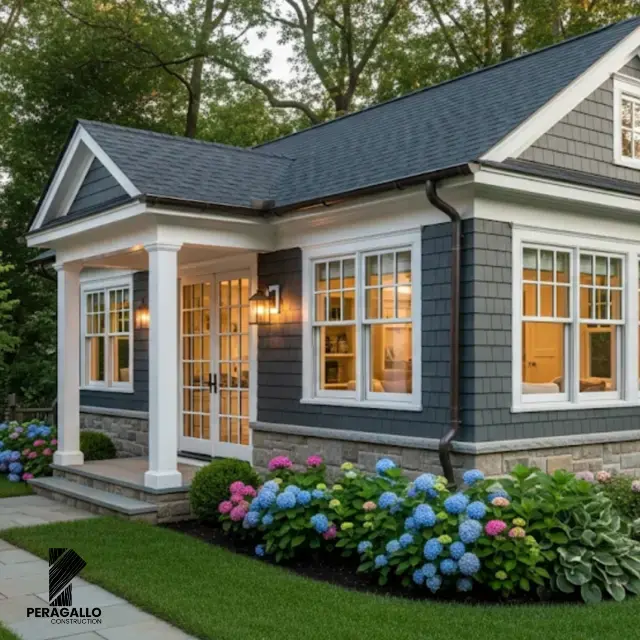Myths Vs Reality: Misconceptions about ADUs and In-Law Suites
- Daniel Peragallo
- Aug 13
- 5 min read
Myths vs. Reality: The Truth About Building a Connecticut In-Law Suite
With Connecticut updating regulations on ADUs, it seems like everybody is talking about in-law suites these days. Maybe you have a grown kid who moved back in, or even just thinking ahead for your parents. Whatever the reason, an in-law suite is a great solution for a lot of homeowners in Connecticut: In denser areas and places with more expensive land, like the Gold Coast, Greenwich, and some areas around Cheshire and the Naugatuck Valley.
Even with the recent surge in popularity, there's a lot of information floating around about building ADUs that's just... wrong.
Before you start planning anything, let’s clear the air. This blog isn’t a sales pitch. It’s a reality check that misinformation on these projects is running rampant. As a local contractor, my crew and I have built plenty of these, and we’ve heard all the misconceptions. So, let’s get into the myths and the facts so you can plan your project with your eyes wide open.
Myth #1: The Cost Per Square Foot Is a Simple Calculation

This is a big one. People think they can get a rough price by multiplying a standard rate by the size of the new space. If only it were that easy.
The Reality:
An ADU has a lot of fixed costs that don't change with size, like permits, utility hookups, and site prep. A small 300 sq. ft. space has these same upfront costs as a 600 sq. ft. one, making the per-square-foot cost a misleading metric.
What to Expect:
For a new, detached ADU in our area, you're likely looking at a range of about $65,000 to over $200,000, depending on the details. The total cost is influenced by design, materials, and labor.
Just remember: there’s no magic number. Just smart planning and honest budgeting.
Myth #2: It's Just a "Remodel," Not a Big Deal
This one’s a big one. People see an in-law suite and think it’s like finishing a basement or adding a bedroom.
The Reality:
An ADU is a full-blown residential unit. It needs to meet all the same codes for things like plumbing, electrical, and fire safety that your main house does.
What it Involves:
This isn't a project for a handyman. It requires its own permits, site plans, and a series of inspections to make sure everything is done right and, most importantly, safely.
My Advice:
Hire a professional team who understands these complexities. A reputable contractor has a crew of vetted specialists to handle the hard stuff, preventing costly mistakes and headaches.
Myth #3: It's Impossible to Get a Permit in Connecticut

I hear this a lot. The idea is that the local town halls are a maze of red tape.
The Reality:
While local regulations can be complex, Connecticut state laws have made it easier to get approval for ADUs.
What to Look For:
Many towns now allow "as-of-right" development for ADUs that meet certain requirements, which means a lot less red tape and a much more streamlined process for you.
My Advice:
Our job is to know the specific rules for your town—whether it's Cheshire, Woodbridge, or anywhere else—and make sure the plans we submit are set up for success.
Myth #4: An ADU Will Ruin Your Property Value
People worry that an in-law suite will limit who can buy their home, but the opposite is almost always true. An in-law suite appeals to buyers with aging parents, adult children, frequent company, and even those looking t
The Reality:
A well-designed, legally permitted ADU adds valuable square footage and the potential for a new source of income. This makes your home much more attractive to a wider range of buyers.
What to Expect:
In some cases, homes with ADUs can be worth up to 35% more than similar homes without them.
A Warning: Just make sure it’s done with all the proper permits. An unpermitted ADU won't be included in the appraisal and can cause problems later on.

Myth #5: It's Just for Rental Income
Don’t get me wrong, a new source of passive income is a fantastic benefit of an ADU. But that’s only part of the story.
In reality, many municipalities are pushing back against the huge resurgence of AirBnBs with stricter regulations, and there's a chance your town might even forbid ADUs if they aren't occupied the owner. (Though this is more common with detatched ADUs with a separate entrance.)
The Reality:
We’ve built in-law suites for all kinds of reasons. They're for aging parents who want to stay close, for adult kids who are still at home, as a dedicated home office, or even as a private guest suite.
The Main Benefit:
It’s an investment in flexibility. An ADU is a great way to adapt your home to a family's changing needs. It’s about building a space that works for you, whatever that may look like now or in the future.
Conclusion
So, there you have it. The real deal on in-law suites. They aren't cheap, they’re more complex than a typical remodel, the permits are manageable with a good plan, and they almost always add value to your home and your family's life. At Peragallo Construction, we believe in being upfront about all of this because your home is personal. We want you to feel completely confident and informed every step of the way. If you’re ready to talk about a project in the Naugatuck Valley, Woodbridge, or anywhere else in our area, give us a call. We're here to help you get it done right.
What is a realistic budget for a detached in-law suite in Connecticut?
A realistic budget for a detached in-law suite in Connecticut is a lot more than most people think. For a new, detached ADU that includes a full kitchen and bathroom, you're typically looking at a range of $100,000 to over $300,000. The final cost depends heavily on the size and the level of finish you want. The smaller the space, the higher the per-square-foot cost often is because of all the fixed costs like permits and utility hookups.
Do I need a separate entrance for my in-law apartment?
Yes, you typically need a separate entrance for your in-law apartment. Most local zoning regulations and building codes in Connecticut require an ADU to be its own independent living space. This means it must have its own dedicated entrance and often its own kitchen and bathroom to be considered a legal, separate unit. If it doesn't have these things, it's generally considered an addition to the main home, not a separate dwelling.
Can I build an ADU in my finished basement?
You can definitely build an ADU in a basement, but you have to make sure it meets all residential codes for a separate living space. This is not the same as just finishing the basement. It’s a bigger deal. You need to ensure it has proper ventilation, its own kitchen and bathroom, and—most importantly—that the space is up to code for a legal living unit, especially concerning fire safety and egress windows. It must be a self-contained unit to be considered a legal ADU.
What’s the average timeline for an in-law suite project?
he timeline for an in-law suite project can vary. An interior conversion might take a few months, while a new detached ADU could take 6-12 months or longer. This includes time for design, getting permits, and the actual construction. The permitting process alone can take a few months, so it’s important to plan for that upfront.
Can I get a separate address for my in-law suite?
In most cases, an in-law suite shares the same address as the primary residence. Some towns may permit a separate unit number, like "Apartment B," but it will still be tied to the main street address. This is another detail we would confirm with the local building department during the planning phase.






Comments